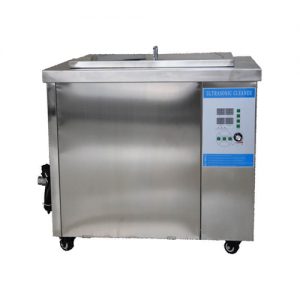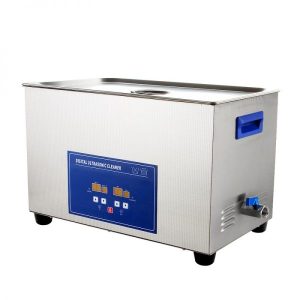As a new type of cleaning technology, an ultrasonic cleaner is greatly well-received in many fields, such as electronic stores, hospitals, laboratories, industrial and mining enterprises. Hence, it’s pretty essential to maintain an ultrasonic cleaner well in order to improve the operating efficiency, extend the service life and reduce the equipment wear and tear. There are some care and maintenance tips for an ultrasonic cleaner, which will be helpful for you.

Maintenance Tips on an Ultrasonic Cleaner
1. During the cleaning process, prohibit conducting liquid (such as water) from splashing into the air inlet on the top of ultrasonic control cabinet. Otherwise it will cause serious damage on the line system of the cleaning system.
2. When an ultrasonic cleaner is used, avoid the collision and strong vibration to the equipment. The equipment is not a crash-proof product.
3. Keep the equipment away from the heat source. The electronic components and circuits of an ultrasonic cleaner may be damaged at high temperature.
4. Don’t put the equipment at humid environment, which is harmful to the equipment as well.
5. An ultrasonic cleaner shouldn’t work more than 4 hours. If the continuous working time is too long, turn the ultrasonic adjusting knob to the position of “0”, but keep the cooling fan working.
6. The cleaning liquid should be precipitated, filtered or replaced in time to ensure the cleaning effect.
7. Deal with the dirty cleaning liquid timely, and clean the cleaning tank regularly to keep the spotless of the cleaning tank and the external appearance, which can improve the durability of the cleaning tank.
8. Inject lubricating agents, such as butter and engine oil, into the parts with transmission mechanisms regularly as required. Replace the gear oil of the reducer regularly to ensure that moving parts can work under good lubrication condition.
9. Test the power supply and the insulation performance regularly. It isn’t allowed to work under unstable power supply for a long time.

What should You not Put in an Ultrasonic Cleaner?
There are only two main categories of objects which can’t be cleaned by an ultrasonic cleaner. The objects that will be damaged by immersion can’t be cleaned by an ultrasonic cleaner, because the ultrasonic cleaning only occurs in the liquid environment. And the objects that can’t be easily dried shouldn’t be cleaned by an ultrasonic cleaner as well, because these objects are generally absorbent.
What is the Best Solution to Use in an Ultrasonic Cleaner?
Many solutions can be used in an ultrasonic cleaner, such as acidic (low pH), alkaline (high pH), neutral, high caustic and enzymatic solutions. They can bond to and remove specific contaminants. Many people may wonder what the best solution among them. There is no absolute answer. The best solution depends on what kind of dirt is being removed.
The acidic solution is suitable for removing lime deposits, scale, rust, and mineral from ferrous metals. The alkaline is more suitable for cleaning tin, brass, zinc, copper, stainless, steel, cast iron, and steel. The neutral solutions are better for cleaning pigments, grease, dust, and other organic compounds. The high caustic solutions are more applicable for removing heavy waxes, oils, and grease from steel, cast iron, and stainless steel. And the enzymatic solutions are more suitable for removing protein-based contaminants from plastics, glass, aluminum, brass, titanium, and stainless steel. The best solution can be chosen based on the objects that need to clean.
[title text=”Related Products” tag_name=”h2″ color=”rgba(32, 163, 219, 0.81)”]
[ux_products columns=”2″ ids=”3032″]
[title text=”Related Posts” tag_name=”h2″ color=”rgba(32, 163, 219, 0.81)”]
https://www.rotovap.cn/rotary-evaporator/2289.html
https://www.rotovap.cn/rotary-evaporator/1440.html
https://www.rotovap.cn/rotary-evaporator/2365.html
